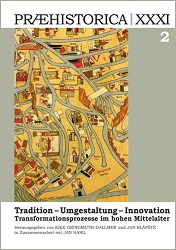Der Bergbau in Niederschlesien in 13.–14. Jahrhundert – der archäologische Forschungsstand
Mining in Lower Silesia in 13th and 14th century – The State of the Archaeological Research
Author(s): Tomasz StolarczykSubject(s): Archaeology, Economic history, 13th to 14th Centuries
Published by: Univerzita Karlova v Praze, Nakladatelství Karolinum
Keywords: Lower Silesia; Middle Ages; ore mining; excavations; prospections;
Summary/Abstract: The aim of this article is to introduce the current state of archaeological research of old mining in Lower Silesia. The study of this subject has already had a tradition of 40 years. Nevertheless, in all these years there has never been an attempt to synthesize or to compare Lower Silesian mining area to other European mining regions. In the last few years, the processing of archive material about the former excavations by Józef Kaźmierczyk as well as the results presented by other researchers (miners, geologists) have shown a clear progress due to new terrain research. In the 13th as and 17th century the gold mining regions were very powerful. Mining, extraction and washing out of gold from the gold-bearing sands in the environs of Złotoryja, Lwówek Śląski, Bolesławiec and Głuchołazy were the most significant part of mining works in the early 13th century. The results of the archeological research of sites relating to mining and washing out of gold were described in the article. In the 13th and 14th century mining works were started in the two other mining regions in Lower Silesia that is in Złoty Stok and Miedzianka. In the mentioned centre the mining of gold, copper, silver and lead ore was only possible in the close-to-surface richest parts of the deposits. The mining activities and metallurgy were probably in the hands of the Cistercians from Kamieniec Ząbkowicki and Lubiąż or in possession of local nobility and the mining companies’ members. The castles, which were of the great significance for administration and management of the mining and metallurgy works, were built close to shafts, drifts or smelting places. The research project (2008–2009) which is being presented here, improved documentation concerning the already known sites and additionally developed knowledge about the mining areas that have not been investigated sufficiently up to date, mainly the sites from the 15th and 16th century (shafts, drifts or smelting places). The inventories contain 146 mining sites (74 for gold, 32 for copper, 31 for silver and lead, 9 for tin).
Journal: Praehistorica
- Issue Year: 31/2013
- Issue No: 2
- Page Range: 655-678
- Page Count: 24
- Language: German

